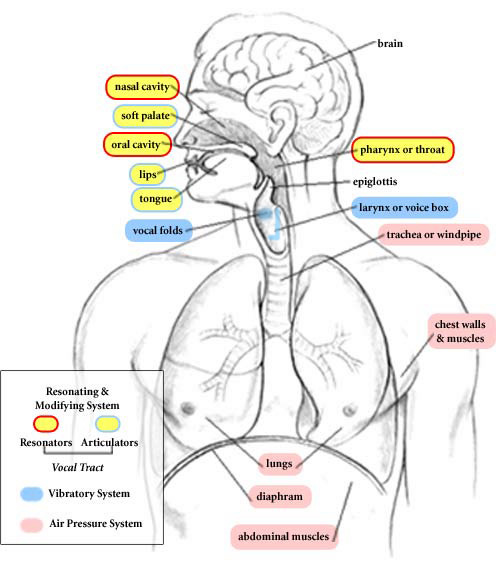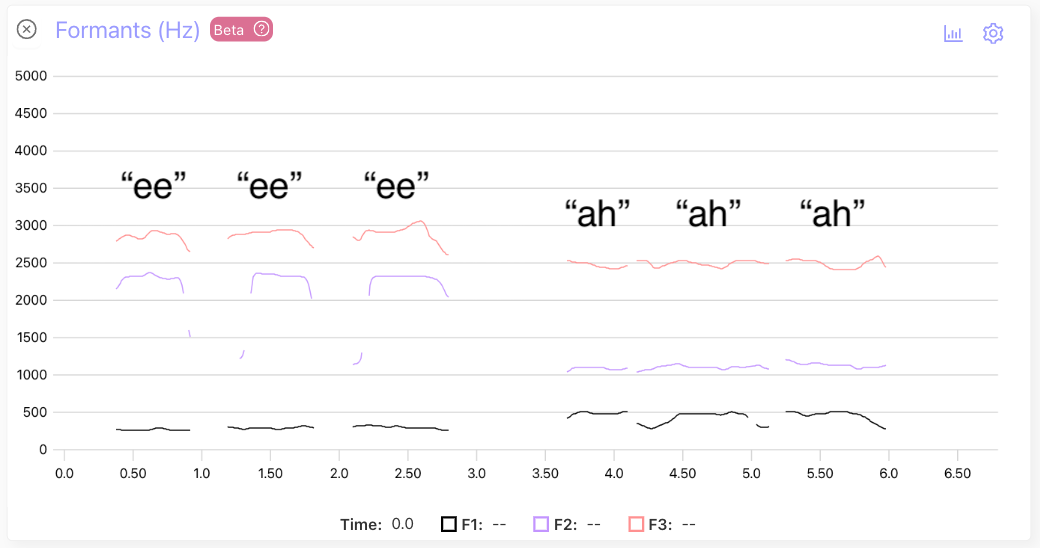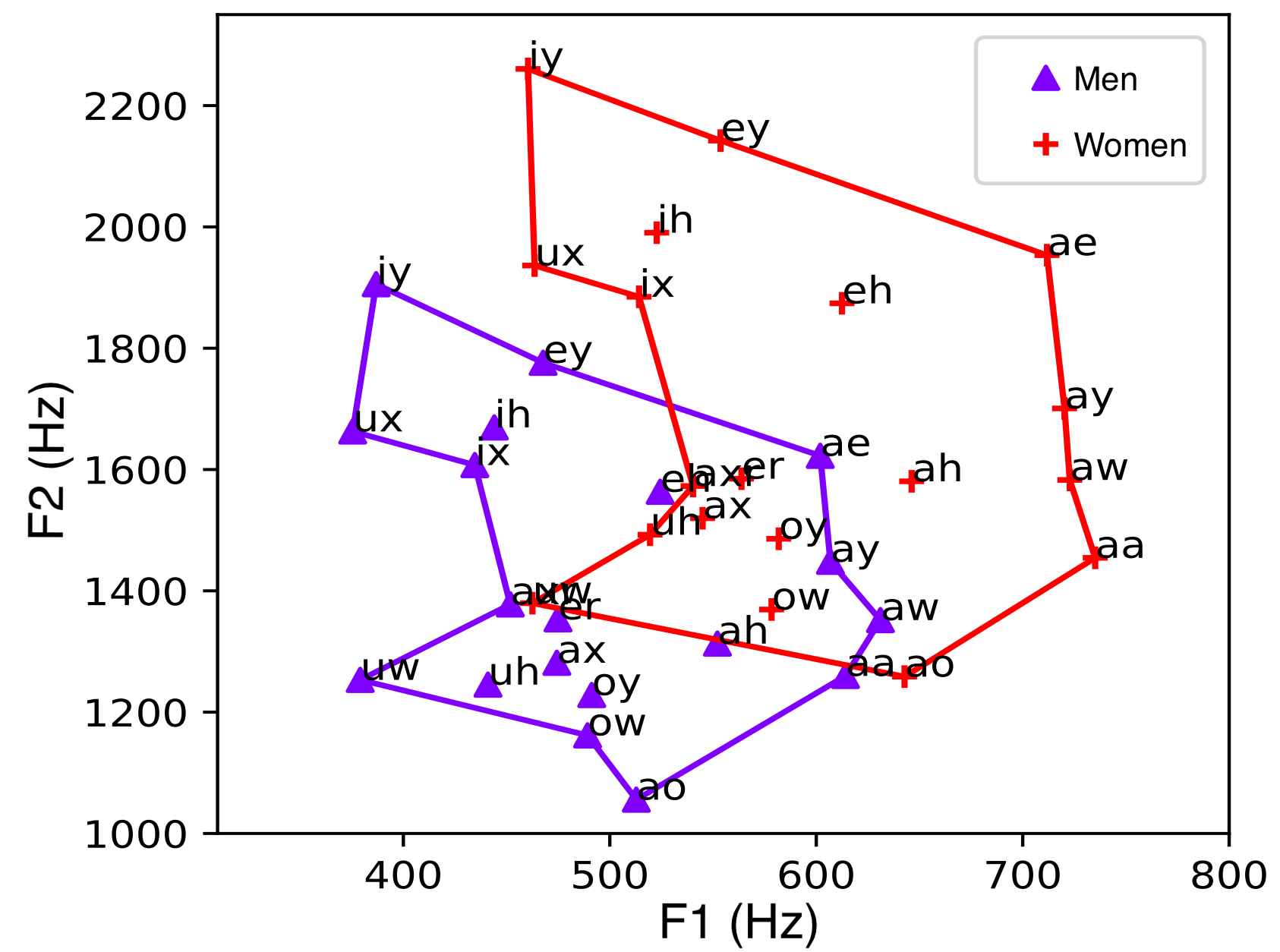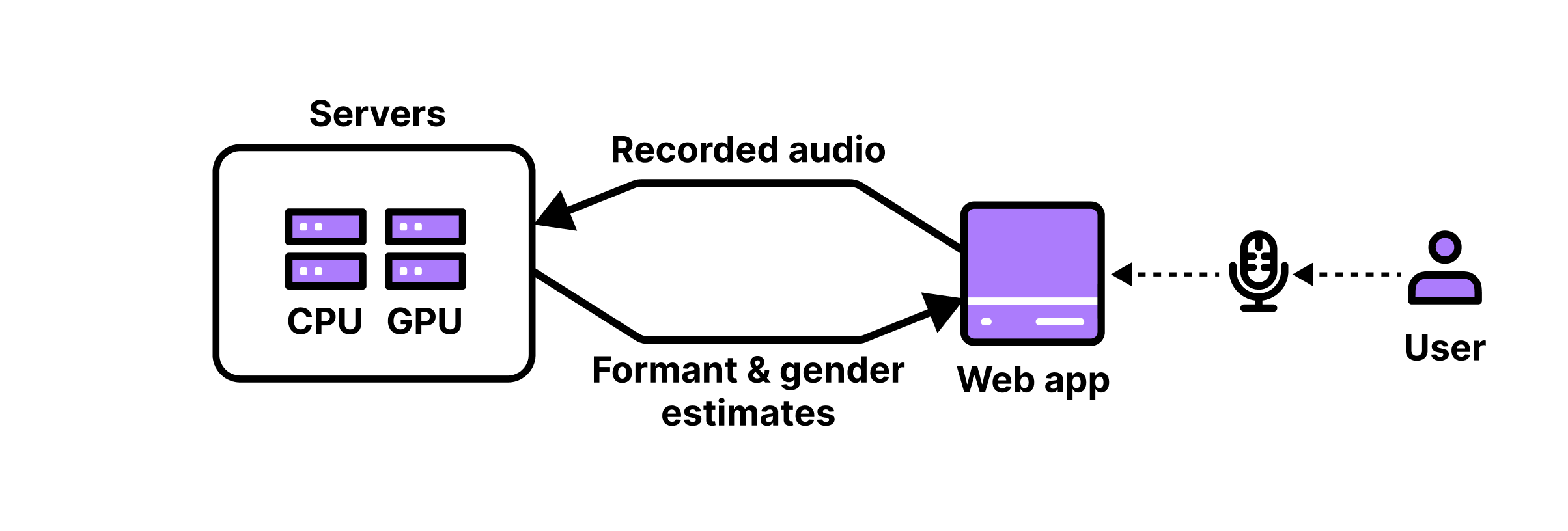Overview
Formants are the resonant frequencies of the vocal tract. They are created by the shape and size of the vocal tract, which can be altered by changing the position of the larynx, tongue, lips, and other articulators [1, 2]. Formants play a crucial role in speech production and are responsible for the unique timbre and quality of each person’s voice. Formants also play a primary role in the perceived gender of someone’s voice.
Note: Please see the references at the end of this article for more information on formants and their role in speech production.
How are formants measured?
Formants are typically measured using acoustic analysis of recorded speech. The first three formants, denoted as F1, F2, and F3, are the most important for speech perception. These formants correspond to specific resonant frequencies of the vocal tract, which are influenced by the shape and size of the vocal tract. It is worth noting that pitch, while not a formant, is also an important acoustic feature of the voice and is often denoted as F0.
Below is a table summarizing the approximate frequency ranges of pitch and the first three formants. These ranges can vary depending on the individual, age, gender, and what’s being spoken.
| Measurement | Approximate Frequency Range (Hz) |
|---|---|
| F0 / pitch | 75 - 500 |
| F1 | 270 - 900 |
| F2 | 900 - 2800 |
| F3 | 2300 - 3400 |
# How are formants influenced by your anatomy?
*Important! When reading this section, it’s important to know that how your anatomy and vocal tract shape can affect each formant is a complex topic. The following section is a simplification and does not cover all factors that can influence formants. Please see references [1, 2, 3] to learn more.*
The diagram below highlights the major anatomical components that influence your speech production. One of the first steps in voice training is understanding each component, how they contribute to your voice, and learning how to control the ones that influence the perceived gender of your voice. That last part can be tricky because most components are controlled subconsciously.

The Voice Foundation
Unlike pitch, which is controlled almost entirely by the length and tightness of the vocal folds, how your anatomy influences formants is more complex. Here are some general guidelines on how you can change your formants:
Effect on F1
| Component | Effect on F1 |
|---|---|
| Larynx position | Lowering the larynx lowers F1, raising it increases F1 |
| Pharynx length | A bigger pharynx lowers F1, a smaller pharynx raises F1 |
| Tongue position | A high tongue position lowers F1, a low tongue raises F1 |
| Lip rounding | Lowers F1, but less pronounced compared to F2 and F3 |
| Jaw | Raising the jaw lowers F1, lowering the jaw raises F1 |
Effect on F2
| Component | Effect on F2 |
|---|---|
| Larynx position | Lowering the larynx lowers F2, raising it increases F2 |
| Pharynx length | A bigger pharynx lowers F2, a smaller pharynx raises F2 |
| Tongue position | A front tongue position raises F2, a back tongue lowers F2 |
| Lip rounding | Significantly lowers F2 |
| Jaw | Minimal direct effect, but interacts with tongue position |
Effect on F3
| Component | Effect on F3 |
|---|---|
| Larynx position | Lowering the larynx lowers F3, raising it increases F3 |
| Pharynx length | A bigger pharynx lowers F3, a smaller pharynx raises F3 |
| Tongue position | Subtle effects, often linked to vowel type (e.g., roundedness) |
| Lip rounding | Lowers F3 |
| Jaw | Minimal direct effect |
How do formants impact your perceived gender?
Formants significantly influence how others perceive your gender based on your voice. The first two formants, F1 and F2, are particularly important. For instance, a lower F1 frequency is often associated with a larger vocal tract, which typically corresponds to a deeper, more “masculine” voice. Conversely, a higher F1 frequency can give the impression of a smaller vocal tract and a higher-pitched, more “feminine” voice.
However, while the values of F1, F2, and F3 are generally lower in men compared to women, their value is also impacted by the words being spoken. Speech researchers often analyze formants in the context of vowels, as different vowels have different formant frequencies. For example, the F2 formant of the sound “ee” is higher than the sound “ah”, which is expected because the position of the tongue and jaw lead to a larger vocal tract when you say “ah” compared to “ee”. The image below is an example screenshot of the formants when saying “ee” and “ah”.

To provide a more comprehensive view, the figure below visualizes the average values for F1 and F2 in men and women for different vowels [4].

Image adapted from:
How Genderfluent measures formants
Genderfluent uses an AI-based algorithm to analyze the formants in your voice recordings. We use an open source algorithm called FormantsTracker.
Given the computational complexity of formant analysis, this process is too resource-intensive to be performed on most user devices. Instead, when you record your voice, the audio is securely sent to our backend servers. There, it is processed using the algorithm and the results are sent back to your device.

